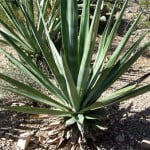 Synonyms: Black – leg, Farrya Synonyms: Black – leg, Farrya
It is an acute infectious and highly fatal, bacterial disease of cattle. Buffaloes, sheep and goats are also affected. Young cattle between 6-24 months of age, in good body condition are mostly affected. It is soil-borne infection which generally occurs during rainy season. In India, the disease is sporadic (1-2 animal) in nature. Etiology: It is caused by Clostridium chauvoei Transmission: The disease spreads through a) Ingestion of contaminated feed and
b) Contamination of wounds. Symptoms: 1. Fever (106-10S°F)
2. Loss of appetite
3. Depression, dullness
4. Suspended rumination
5. Rapid pulse and heart rates
6. Difficult breathing (dyspnoea)
7. Lameness in affected leg.
8 Crepitation swelling over hip, back & shoulder.
9. Swelling is hot & painful in early stages whereas cold and painless inter.
10. Recumbency (prostration) followed by death within 12-48 hrs. Diagnosis: 1. History of age, body condition & season.
2. Symptoms – high fever, Crepitation swelling and lameness.
3. P.M. findings – dark colored muscles with gaseous infiltration.
4. Examination of smears made from affected (issues or fluid from 4he swelling.
5. Isolation of the organism. Treatment: 1. Penicillin @ 10,000 units /Kg body weight 1M & locally daily for 5-6 days.
2. Oxytetracycline in high doses i.e. 5-10 mg/Kg body weight 1M or IV
3. Indcse the swelling and drain off
4. B.Q. antiserum in large does, if available.
5 Injection. Avil / Cadistin @ 5-10 ml IM Prophylaxis: a) General measures: Isolation of infected and in contact animals. Disposal of carcass either by deep burial or burning. Proper disinfection of surgical instruments prior to operation. Don’t allow grazing in affected area.
b) Vaccination: Alum precipitated B.Q. Vaccine 5 ml subcut each year before rainy season. Source | 






